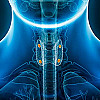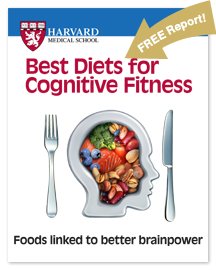Recent Blog Articles

Moving from couch to 5K

How — and why — to fit more fiber and fermented food into your meals

Tick season is expanding: Protect yourself against Lyme disease

What? Another medical form to fill out?

How do trees and green spaces enhance our health?

A muscle-building obsession in boys: What to know and do

Harvard Health Ad Watch: New drug, old song, clever tagline

Concussion in children: What to know and do

What color is your tongue? What's healthy, what's not?

Your amazing parathyroid glands

On this page you'll discover
Headache
Nearly everyone experiences headaches from time to time. In most cases, they are little more than short-term nuisances that go away with an over-the-counter pain reliever, food, caffeine, or rest. But some headaches are more severe and may require special treatment or even emergency care.
Types of headaches
Most headaches fall into four main categories: tension, migraine, cluster, and sinus.
Tension headache. Tension headaches are the most common headache, affecting about three of every four adults at some point in their lives. The typical tension headache produces a dull, squeezing pain on both sides of the head. Most episodes are mild to moderate in severity and occur infrequently, but some people can get severe tension headaches three or four times a week. The discomfort usually last 20 minutes to two hours. While physical and emotional stress often plays a role in tension headaches, other factors can contribute, like illness, lack of sleep, and missed meals. Problems involving the neck or jaw muscles and joints can also cause tension headaches.
Migraine headache. Migraines are typically less common than tension headaches but are usually much more severe. They affect more women than men. Genetics also play a role. In fact approximately 70% of migraine sufferers have at least one close relative with the condition. Neurologists believe migraines are caused by changes in blood flow and nerve cell activity in the brain . Migraines cause moderate to severe throbbing pain, often accompanied by nausea and sensitivity to light and sound. Episodes usually last four to 24 hours or even longer. Migraines often begin in the evening or during sleep. In some people, the attacks are preceded by several hours of fatigue, depression, and sluggishness or by irritability and restlessness.
Cluster headache. Cluster headaches are uncommon, yet severe. The pain always strikes one side of the head, starting abruptly and lasting for about 30 minutes to three hours. They occur five times more often in men than women. As the name suggests, these headaches tend to come in clusters. About 90% of cluster attacks follow a pattern of one or two headaches a day over two to eight weeks, alternating with headache-free stretches. Usually, the remission time between episodes lasts six months to a year, but can be as short as a few weeks or as long as several years. It’s unclear what causes cluster headaches, although certain triggers are associated with outbreaks, such as alcohol, foods high in nitrites like processed meat and green leafy vegetables (spinach, lettuce), tobacco products, bright lights, and hot weather.
Sinus headache. The sinuses are air-filled spaces above, between, and beneath your eyes, on either side of your nose. Both the nose and sinuses are lined with a thin membrane. Sinus headaches can occur when this inner membrane becomes inflamed, when fluid builds up in the sinuses and can’t drain out through the nose, or when pressure in the sinuses is lower than environmental air pressure. Sinus headache pain is most often felt in the center of the face, the bridge of the nose, and the cheeks, but may also occur behind the eyes or in the center of the forehead.
Other headache types include:
Thunderclap. As the name suggests, a thunderclap headache strikes suddenly with excruciating pain. It is a serious situation that requires immediate medical attention because it could indicate bleeding in or around the brain.
COVID-19. Headaches are one of the most common symptoms of COVID-19, and the severity and duration vary from person to person.
Cervicogenic. With this type of headache, pain begins in the neck and travels to the head and face. Cervicogenic headaches are sometimes confused with migraines and tension headaches, which can also cause neck pain. They result from structural problems at the top of the spine involving thecervical vertebrae. Injuries like whiplash, arthritis, and infections are thought to be common causes.
Other situations can trigger occasional or recurring headaches. For instance, many drugs list headaches among their side effects. (Check with your doctor if you have frequent headaches and use medication, over-the-counter, prescription,or both, for more than 10 to 15 days a month.) Sudden, strenuous exercise and sexual intercourse can also cause headaches, as can high blood pressure (hypertension).
What are common headache symptoms?
Headache symptoms can vary depending on the type, although there is some overlap. Here are the trademark symptoms for the most common headaches.
Tension headache symptoms. The typical tension headache produces a dull, squeezing pain and pressure on both sides of the head. People with severe tension headaches may feel like their head is trapped in a vise. The shoulders and neck can also ache.
Migraine headache symptoms. In typical cases, migraine pain occurs on one side of the head, often beginning around the eye and temple before spreading to the back of the head. The throbbing or pulsating may be severe. Nausea is common, and many migraine sufferers also have watery eyes, a running nose, or congestion. One way to remember the symptoms of migraine is the acronym POUND:
- P: Pulsating pain
- O: One-day duration of severe untreated attacks
- U: Unilateral (one-sided) pain
- N: Nausea and vomiting
- D: Disabling intensity
About 20% of migraine sufferers also experience auras, a sequence of visual or sensory disturbances, such as temporary loss of vision, halos, sparkles or flashing lights, wavy lines, and numbness or tingling on one side of the body, especially in the face or hand. The aura can occur before and during an attack.
Although a migraine can come on without warning, there is often a trigger. Specific trigger(s) can vary, but a migraine sufferer usually remains sensitive to the same ones. Some common triggers include:
- changing weather, like rising humidity and heat
- lack of sleep or oversleeping
- fatigue
- emotional stress
- sensory triggers, such as bright or flickering lights, loud noises, and strong smells
- missing a meal
- alcohol, especially red wine
- chocolate
- nitrates in cured meats and fish
- aged cheese
- an increase or decrease in caffeine
- monosodium glutamate or MSG (often present in Asian and prepared foods)
Sinus headache symptoms. Sinus headaches can trigger pain over the forehead, around the nose and eyes, over the cheeks, or in the upper teeth and gums.
Cluster headache symptoms. The deep and explosive pain of cluster headaches always strikes one side of the head, often near the temple. The eye on the painful side becomes red and watery, the eyelid may droop, and the nose runs or is blocked. The attack starts abruptly and lasts for approximately 30 minutes to three hours. Nausea and sensitivity to light and sound also may accompany the pain.
What are the best headache treatments?
For the occasional, mild to moderately painful headache, an over-the-counter (OTC) pain medication is often sufficient treatment. These include acetaminophen (Tylenol) and nonsteroidal anti-inflammatory drugs (NSAIDs) like aspirin, naproxen (Aleve), and ibuprofen (Motrin, Advil). Always follow the label's instructions and take these medications only as directed. Consult your doctor if you use OTC drugs more than a couple of times a week to manage headaches.
Non-drug remedies include eating a snack and drinking water or a caffeinated beverage like coffee. Some people find relief from placing a cold compress on their head and/or a heating pad or warm towel around their neck and shoulders. Taking a warm shower or a nap may also help. Relaxation techniques, such as deep breathing, meditation, and visualization can ease headache pain by relaxing muscles and reducing tension.
Certain types of headaches may require stronger treatments. For example:
- Tension headache. People who suffer from severe tension headaches are more likely to benefit from a doctor-prescribed pain medication or a muscle relaxant.
- Migraine headache. Migraine sufferers may be able to control their headaches with OTC pain relievers if taken early in the attack. For more severe episodes, prescription drugs are needed.
Most doctors recommend triptan drugs, which are available as tablets, nasal sprays, or injections. Examples include sumatriptan (Imitrex), zolmitriptan (Zomig), and rizatriptan (Maxalt). Triptans act on specific serotonin receptors to constrict dilated blood vessels throughout the body. Most people feel the effects after 20 to 30 minutes and complete relief within one to two hours. Still, the sooner you take them once symptoms appear, the better. Some people require a second dose within 12 to 24 hours.
Other prescription drugs used to treat migraines are ditans and calcitonin gene-related peptide (CGRP) inhibitors. Ditans act on different serotonin receptors found mainly within the brain. However, they don’t constrict blood vessels like triptans, which makes them a safer alternative for people with heart disease or high blood pressure. Lasmiditan (Reyvow) currently is the only FDA-approved ditan.
CGRP inhibitors (known informally as “gepants”) block the CGRP chemical that inflames nerve endings and causes blood vessels to dilate. Currently three gepants have been approved for migraines: ubrogepant (Ubrelvy), rimegepant (Nurtec ODT), and atogepant (Qulipta).
Cluster headache. For cluster headaches, sumatriptan (also used to treat migraines) is often effective, particularly when given by injection. Another option is inhaling oxygen, administered in an emergency room or at home from a portable tank, which can be prescribed by a doctor. If there's no improvement after 15 minutes of inhaling, further oxygen therapy may not help.
Recent Blog Articles

Moving from couch to 5K

How — and why — to fit more fiber and fermented food into your meals

Tick season is expanding: Protect yourself against Lyme disease

What? Another medical form to fill out?

How do trees and green spaces enhance our health?

A muscle-building obsession in boys: What to know and do

Harvard Health Ad Watch: New drug, old song, clever tagline

Concussion in children: What to know and do

What color is your tongue? What's healthy, what's not?

Your amazing parathyroid glands
Free Healthbeat Signup
Get the latest in health news delivered to your inbox!
Sign Up

